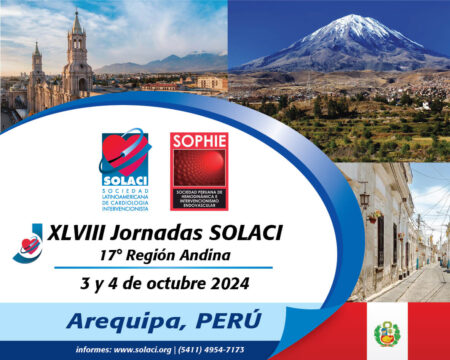Coronary calcifications pose a complex challenge with a high incidence (25% of all angioplasties), thus implying difficult management and adverse long-term outcomes, such as an increased risk of events, especially the need for repeat revascularization. The main mechanisms of long-term failure include stent underexpansion and, in particular, minimal post-deployment stent area.

Intravascular lithotripsy (IVL) has been proposed as a strategy to improve vascular compliance through shockwave pulses that generate fractures, altering atheroma stiffness. While no clinical differences had been previously observed between the treatment of concentric and eccentric calcium according to conventional angiography, given the improved sensitivity of optical coherence tomography (OCT) for calcium assessment, the aim of this study was to evaluate the efficacy of IVL in different calcium morphologies.
A prospective, multicenter, single-arm study was conducted in 13 centers in Spain and Italy on consecutive patients undergoing IVL, excluding those with prior atherectomy and chronic kidney disease. OCT (with Dragonfly and Lunawave catheters) was performed before IVL, immediately after IVL, and post-stenting with optimization.
Concentric calcium was defined as that surrounding the lesion in a >180° arc, and eccentric calcium as that in a ≤180° arc. Nodules were defined as protrusions into the lumen, which could be eruptive (with irregular surface and scant fibrous tissue) or non-eruptive.
The angiographic primary endpoint (PEP) was angiographic success, defined as residual stenosis post-IVL <20% in concentric vs. eccentric lesions. The OCT PEP was the number of fractures in concentric vs. eccentric lesions. Secondary endpoints included length, fracture depth, expansion, stent malapposition, and minimal stent area (MSA).
Researchers analyzed 95 lesions in 90 patients; 47 of such lesions were predominantly concentric and 48 were predominantly eccentric. The average age was 72.5±9.1 years, and most patients were men (73.3%). Most patients had chronic coronary syndromes, and the left anterior descending artery was the most frequently affected vessel. There were no significant differences in residual stenosis after stenting between concentric vs. eccentric lesions (12.2±11.1% vs. 12.5±10.0%; p=0.894), nor in luminal gain (1.27±0.45 mm vs. 1.25±0.51 mm; p=0.820). The angiographic PEP showed no significant differences (87.0% vs. 76.6%; p=0.196).
After IVL, calcium fracture as per OCT was greater in concentric lesions, although the difference was not statistically significant (79% vs. 66%; p=0.165). However, other fracture parameters were higher in concentric lesions, such as the number of fractures per lesion (4.2±4.4 vs. 2.3±2.8; p=0.018), fracture width (p=0.005), and fracture depth (0.92±0.35 mm vs. 0.68±0.35 mm; p=0.008). There were no differences observed in MSA or stent symmetry, although significant malapposition was more common in eccentric lesions.
Calcified nodules accounted for 29.5% of the lesions, being more prevalent in the right coronary artery (50% of RCA lesions). Most presented as non-eruptive (57%), and, frequently, there were dissections at the site of the nodule, with less calcium fractures. After stenting, only 40.7% of nodules were adequately deformed without generating intraluminal protrusions, resulting in malapposition >0.4 mm in more than 70% of cases.
At the 362-day follow-up, there were no in-hospital deaths recorded, with a 96-% freedom from all-cause mortality at one year and a 96-% freedom from target lesion revascularization (TLR).
Conclusions
In conclusion, the use of IVL resulted in similar fracture values in both concentric and eccentric lesions, although concentric lesions saw greater fracture depth and width. Post-stenting diameters were similar when evaluated by angiography and OCT. Calcified nodules were associated more frequently with dissections than with fractures, and a showed a higher trend towards malapposition.

Dr. Omar Tupayachi.
Member of the Editorial Board of SOLACI.org.
Original Title: Impact of coronary calcium morphology on intravascular lithotripsy.
Reference: McInerney A, Travieso A, Baza AJ, Alfonso F, del Val D, Cerrato E, Garcia de Lara J, Pinar E, Perez de Prado A, Jimenez Quevedo P, Tirado-Conte G, Nombela-Franco L, Brugaletta S, Cepas-Guillén P, Sabaté M, Cubero Gallego H, Vaquerizo B, Jurado A, Varbella F, Jiménez M, Garcia Escobar A, de la Torre JM, Amat Santos I, Jimenez Diaz VA, Escaned J, Gonzalo N. Impact of coronary calcium morphology on intravascular lithotripsy. EuroIntervention. 2024 May 20;20:113. doi: 10.4244/EIJ-D-23-00605.
Subscribe to our weekly newsletter
Get the latest scientific articles on interventional cardiology





